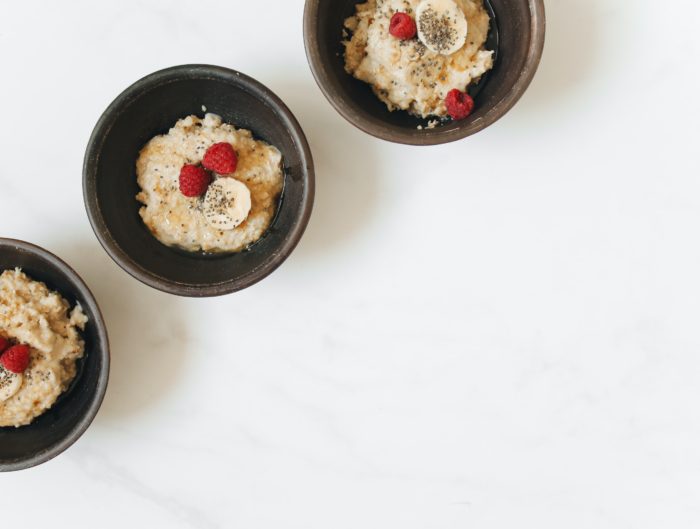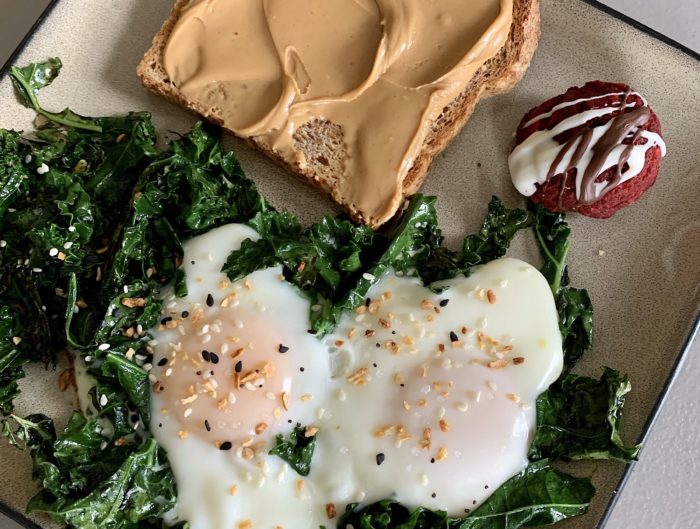When you first learn about a new diagnosis of prediabetes, there can be a lot of fear and uncertainty surrounding what to do to reverse this diagnosis. Let me reassure you that there is no one-size-fits-all approach to managing prediabetes or any health concern.
However, I found after working with hundreds of people with prediabetes, there are 5 common strategies that help lower blood sugars over the next 3 to 6 months. This is the typical time frame most doctors will wait prior to retesting labs or performing another oral glucose challenge.
Let’s get started!
#1 You don’t have to change everything at once
I know it’s tempting when you first get a diagnosis of prediabetes to want to start a new diet, exercise more, test blood sugars, and do all the research on supplements. Trust me on this, you’ll be more successful if you put a solid plan in place for how you will accomplish one or two concerns versus trying to change ten things about your lifestyle at once.
Just be very clear on what you plan to work on with your one or two goals. For example: I will replace 1 can of soda per day with a bottle of water for the next 2 weeks. Another example would be: I will exercise after work 4 days per week for 30 minutes.
#2 Evaluate your hydration
The leading source of added sugars in the American diet is from our beverages. This includes soda, sweet tea, fruit drinks, and energy drinks. While 100% fruit juice does not contain added sugars, it has similar amounts of natural sugars and no fiber leading to a similar blood sugar response as soda and sweet tea. For this reason it’s worth evaluating your juice intake as well.
The other reason why I recommend starting with changing your hydration habits is because glucose from liquids enter the bloodstream much quicker than solid foods that contain carbohydrates. That’s why I love recommending juice and sugary sodas for treating dangerously low blood sugar! It will spike blood sugars back up to normal range within 15 minutes.
Now imagine what this is doing to your blood sugars that are in normal range or slightly elevated already? That’s right, your blood sugars are spiking the whole time you’re sipping the beverage and requiring your pancreas to produce insulin all day long.
In a perfect world, you would replace your soda or sweet tea with water or unsweet tea; however I know this is a challenge for a lot of people. I try not to recommend artificially sweetened beverages but they can be a good tool to help you wean off sugary beverages and supplement your water intake. I have another blood post that lists other options to drink besides plain water.
#3 Don’t go long periods of time without eating
Are you someone who likes to skip breakfast? Or worse, skips breakfast and lunch, then eats a large dinner and evening snacks? When you have a diagnosis of prediabetes, it’s important to spread your carbohydrate intake as evenly as possible throughout the day. This prevents you from getting overly hungry and overeating at your next meal. When you eat large amounts of carbohydrates at one time, your body will have a hard time removing it all from the bloodstream in a timely manner.
What if you’re someone who doesn’t feel hungry until dinner time? In order to keep blood sugars in target range, it would still be a good idea to have at least a snack around breakfast and/or lunch time. This is because when you have prediabetes, your liver is predisposed to dumping it’s stored glucose into your bloodstream when you haven’t had enough glucose from your diet. So if you’re skipping meals or fasting to try to lower your blood sugars, you’re only causing them to go higher! Click here for a full list of healthy snacks!
#4 Try to avoid eating carbohydrates by themselves
When carbohydrates are consumed by themselves, it is likely you will see a quicker rise in blood sugars. Examples include: sugary beverages or desserts between meals, pasta and breadsticks with little meat in the sauce, or fruit at a snack. However, if carbohydrates are paired with fiber, fats, and protein, you will see a “buffered” effect where blood sugars do not spike as high. That’s because proteins, fats, and fiber digest slower and cause the glucose from carbohydrates to enter the bloodstream at a slower rate.
This is important information to know because it will allow you to continue to enjoy your favorite higher carbohydrate foods while still keeping blood sugars in target range. Some examples of high fiber carbohydrate + protein + fat meals would be:
- Chickpea pasta with meat sauce and a salad
- Steak, ½ baked potato, roasted broccoli, and a brownie
- Breaded chicken strips on a salad with dressing, side of fruit
- Deli meat sandwich on sprouted grain bread, raw vegetables with a dip, small handful chips
#5 Move your body
I know if you’ve heard this once you’ve heard it a million times: you need to exercise. While I’m sure you’re already aware of the cardiovascular and weight loss benefits of exercise, it’s also important to note that exercise or just walking more throughout the day can help improve your insulin sensitivity. This is really important to know because the main problem your body is experiencing with prediabetes is insulin resistance.
This insulin sensitizing benefit not only occurs during exercise but extends for hours after exercise as well, more so with strength or resistance training. If you’re not ready to jump into an exercise regimen just yet, committing to 10 minutes of movement (walking, house cleaning, playing with kids or your dog) after a meal can help to lower post-meal blood sugars!
There you have it! 5 tips to get you started on your journey to improve blood sugars. Have questions about this content that’s specific to you and your health journey? Click here to learn more about my private coaching services!
Note: This article is not intended to provide medical advice, diagnosis, opinion, treatment or services. This article and the links contained in it provide general information for educational purposes only. The information provided in this article is not a substitute for medical care, and should not be used in place of the advice of your physician or registered dietitian.





Leave A Reply